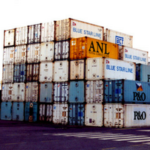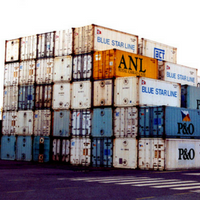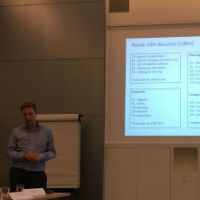Financing your international trade – documentary collections
| 04-04-2018 | Lionel Pavey |

Acquiring the right goods at the right price can eventually lead a company to overseas markets. International trade has certain barriers – buyers and sellers have never met and are reluctant to completely trust each other; drawing up documentation can be difficult and time consuming due to difference in law between 2 countries; agreement has to be made on the settlement currency; documentation that implies ownership needs to be sent, but the seller is hesitant to have these released to the buyer before payment has been made. This article looks at 1 of the 3 main financial instruments used in international trade – the documentary collection (DC).
What is the process?
1 – Buyer and seller agree terms and conditions for a trade to take place – the means of payment, the collecting bank (this is usually the house bank of the buyer), a detailed description of the set of documents that have to supplied.
2 – The seller (exporter) arranges for shipment of the goods to the buyer (importer) via a shipping agent and receives a transport document (usually a bill of lading) that is negotiable.
3 – The seller prepares the agreed documents into 1 package and presents these to his bank (the remitting bank). This will include the bill of lading, certificates of origin, inspection notices, a collection order stating the terms and conditions under which the bank can release the documents etc. and a draft.
4 – The remitting bank will send these documents to the collecting bank instructing the collecting bank to present the documents to the buyer and to collect the payment.
5 – The collecting bank will inspect the documents and the contract, ensuring that they are in compliance with the collection order.
6 – The collecting bank will contact the buyer stating that the documents are in order, or what discrepancies have been established; and inform the buyer about the terms and conditions of the collection order.
7 – The buyer will be shown the documents and asked to accept them. Acceptance is recognised by signing the draft. When the documents are accepted, and payment is made then the documents are handed over to the buyer.
8 – Release of the documents occurs in 2 ways – documents against payment is when payment is made at sight of the documents; and documents against acceptance is when payment is made at an agreed date in the future.
9 – The buyer takes possession of the documents allowing them to receive the goods from the warehouse or port where they are being stored.
10 – The collecting bank arranges to pay the remitting bank either immediately in the event of a sight bill, or at the agreed future date in the event of an acceptance bill.
11 – The remitting bank arranges to credit the account of the seller.
So it is a letter of credit?
No, a documentary collection is an alternative to a letter of credit. In a DC, the banks undertake no guarantee role – they merely advise, release documents and effect payments. If a buyer does not agree to the documents, they do not receive the goods, the banks do not effect payment and the seller is out of pocket. Therefore a DC is normally far cheaper than a LC.
Why use a DC?
Both buyer and seller know each other and are happy with their existing relationship.
The collections are for a one-off transaction – there is no open account between the parties.
The seller has faith in the economic and political characteristics of the importing country.
A LC is not acceptable to both parties.
Documentary collections are governed by the Uniform Rules for Collections as issued by the International Chamber of Commerce.

Cash Management and Treasury Specialist











